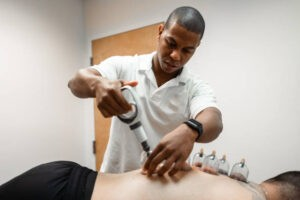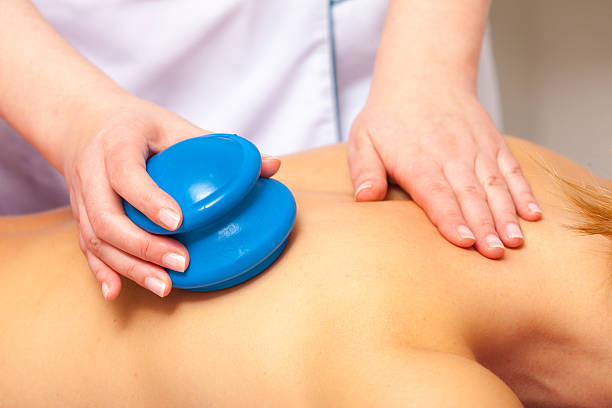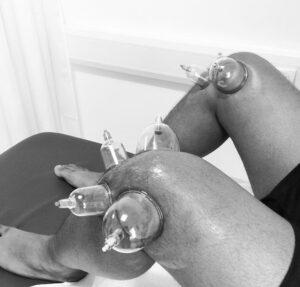At Limitless, our physical therapists are constantly seeking innovative and effective methods to enhance their treatment approaches and provide optimal care for their clients. One such technique gaining popularity in recent years is cupping therapy. Originating from traditional Chinese medicine, cupping involves placing cups on the skin to create suction, promoting blood flow, and relieving tension. In the realm of physical therapy, cupping has emerged as a valuable adjunct to traditional treatments, offering a holistic approach to healing and pain relief.
Cupping therapy involves the use of suction cups applied to specific areas of the body. The suction created by the cups lifts the skin and underlying tissues, increasing blood flow to the area. There are two primary types of cupping: dry cupping and wet cupping. Dry cupping involves creating suction without drawing blood, while wet cupping involves a controlled removal of a small amount of blood. At Limitless, we only practice dry cupping.

How Cupping Works in Physical Therapy:
- Improved Blood Circulation: Cupping enhances blood circulation in the targeted areas, promoting the delivery of oxygen and nutrients to the tissues. Improved circulation accelerates the natural healing process, aiding in the repair of damaged cells and tissues.
- Muscle Tension Release: The suction created by the cups helps release muscle tension and tightness. This is particularly beneficial for patients with chronic pain or conditions such as fibromyalgia, where muscle stiffness is a common symptom.
- Fascial Release: Cupping therapy can target the fascia, the connective tissue surrounding muscles, and help release any restrictions. This is crucial for improving flexibility and range of motion, especially in patients recovering from injuries or surgeries.
- Pain Relief: Cupping has been reported to have analgesic effects, providing relief from pain associated with various musculoskeletal conditions. The suction stimulates the release of endorphins, the body’s natural painkillers, contributing to a reduction in perceived pain.
- Inflammation Reduction: By promoting blood flow and lymphatic drainage, cupping aids in reducing inflammation. This can be particularly beneficial for patients with inflammatory conditions such as arthritis or those recovering from acute injuries.
Limitless physical therapists can integrate cupping into their treatment plans in several ways:
- Preparation and Education: Before introducing cupping therapy, our therapists educate their patients about the technique, its benefits, and what to expect during a session. Open communication is key to ensuring a positive experience and outcome.
- Assessment and Targeted Application: Our therapists assess each patient’s specific needs and apply cupping to target areas where increased blood flow, muscle tension release, or fascial release is required. The cups can be stationary or moved around to achieve the desired effect.
- Integration with Other Modalities and Techniques: Cupping can be seamlessly integrated with other physical therapy modalities, such as soft tissue mobilization and massage, stretching and mobility exercises, and joint mobilization. This multi-faceted approach enhances the overall effectiveness of the treatment.
As Limitless physical therapists continue to explore innovative techniques to improve patient outcomes, cupping therapy has emerged as a valuable tool for enhancing healing and alleviating pain. Its ability to improve blood circulation, release muscle tension, and reduce inflammation makes it a versatile and complementary addition to more traditional physical therapy approaches. By incorporating cupping into a patient’s treatment plan, we can offer a more holistic and patient-centered approach to rehabilitation and pain management.
Give us a call or fill out our contact form here on the website if you’re interested in learning more about cupping!





